Bell Labs
Nokia Bell Labs (formerly named Bell Labs Innovations (1996–2007),[1] AT&T Bell Laboratories (1984–1996)[2] and Bell Telephone Laboratories (1925–1984)[3]) is an American industrial research and scientific development company owned by Finnish company Nokia. With headquarters located in Murray Hill, New Jersey, the company operates several laboratories in the United States and around the world. Bell Labs has its origins in the complex past of the Bell System.
Bell Labs logo since Nokia's acquisition in 2016 | |
 Nokia Bell Labs headquarters in Murray Hill, New Jersey (formerly Lucent's head office) | |
| Subsidiary | |
| Industry | Telecommunication, Information technology, Material science |
| Founded | 1925 (as Bell Telephone Laboratories, Inc.) |
| Founder | Alexander Graham Bell |
| Headquarters | Murray Hill, New Jersey, U.S. |
Key people | Marcus Weldon |
| Parent | AT&T (1925–96) Western Electric (1925–83) Lucent (1996–2006) Alcatel-Lucent (2006–16) Nokia (2016–present) |
| Website | www |
In the late 19th century, the laboratory began as the Western Electric Engineering Department and was located at 463 West Street in New York City. In 1925, after years of conducting research and development under Western Electric, the Engineering Department was reformed into Bell Telephone Laboratories and under the shared ownership of American Telephone & Telegraph Company and Western Electric.
Researchers working at Bell Labs are credited with the development of radio astronomy, the transistor, the laser, the photovoltaic cell, the charge-coupled device (CCD), information theory, the Unix operating system, and the programming languages B, C, C++, and S. Nine Nobel Prizes have been awarded for work completed at Bell Laboratories.[4]
Origin and historical locations
Bell's personal research after the telephone
In 1880, when the French government awarded Alexander Graham Bell the Volta Prize of 50,000 francs (approximately US$10,000 at that time; about $270,000 in January 2019's dollars)[5] for the invention of the telephone, he used the award to fund the Volta Laboratory (Alexander Graham Bell Laboratory) in Washington, D.C. in collaboration with Sumner Tainter and Bell's cousin Chichester Bell.[6] The laboratory was variously known as the Volta Bureau, the Bell Carriage House, the Bell Laboratory and the Volta Laboratory.
It focused on the analysis, recording, and transmission of sound. Bell used his considerable profits from the laboratory for further research and education to permit the "[increased] diffusion of knowledge relating to the deaf":[6] resulting in the founding of the Volta Bureau (c. 1887) which was located at Bell's father's house at 1527 35th Street N.W. in Washington, D.C. Its carriage house became their headquarters in 1889.[6]
In 1893, Bell constructed a new building close by at 1537 35th Street N.W., specifically to house the lab.[6] This building was declared a National Historic Landmark in 1972.[7][8][9]
After the invention of the telephone, Bell maintained a relatively distant role with the Bell System as a whole, but continued to pursue his own personal research interests.[10]

Early antecedent
The Bell Patent Association was formed by Alexander Graham Bell, Thomas Sanders, and Gardiner Hubbard when filing the first patents for the telephone in 1876.
Bell Telephone Company, the first telephone company, was formed a year later. It later became a part of the American Bell Telephone Company.
American Telephone & Telegraph Company (AT&T) and its own subsidiary company, took control of American Bell and the Bell System by 1889.
American Bell held a controlling interest in Western Electric (which was the manufacturing arm of the business) whereas AT&T was doing research into the service providers.[11][12]
In 1884, the American Bell Telephone Company created the Mechanical Department from the Electrical and Patent Department formed a year earlier.
Formal organization and location changes

In 1896, Western Electric bought property at 463 West Street to station their manufacturers and engineers who had been supplying AT&T with their product. This included everything from telephones, telephone exchange switches, and transmission equipment.
In 1925, Bell Laboratories was developed to better consolidate the research activities of the Bell System. Ownership was evenly split between Western Electric and AT&T. Throughout the next decade the AT&T Research and Development branch moved into West Street.
Bell Labs also carried out consulting work for the Bell Telephone Company, U.S. government work, and a few workers were assigned to basic research. The first president of research at Bell Labs was Frank B. Jewett who stayed there until 1940.[13][14][15]
By the early 1940s, Bell Labs engineers and scientists had begun to move to other locations away from the congestion and environmental distractions of New York City, and in 1967 Bell Laboratories headquarters was officially relocated to Murray Hill, New Jersey.
Among the later Bell Laboratories locations in New Jersey were Holmdel, Crawford Hill, the Deal Test Site, Freehold, Lincroft, Long Branch, Middletown, Neptune, Princeton, Piscataway, Red Bank, Chester, and Whippany. Of these, Murray Hill and Crawford Hill remain in existence (the Piscataway and Red Bank locations were transferred to and are now operated by Telcordia Technologies and the Whippany site was purchased by Bayer[16]).
The largest grouping of people in the company was in Illinois, at Naperville-Lisle, in the Chicago area, which had the largest concentration of employees (about 11,000) prior to 2001. There also were groups of employees in Indianapolis, Indiana; Columbus, Ohio; North Andover, Massachusetts; Allentown, Pennsylvania; Reading, Pennsylvania; and Breinigsville, Pennsylvania; Burlington, North Carolina (1950s–1970s, moved to Greensboro 1980s) and Westminster, Colorado. Since 2001, many of the former locations have been scaled down or closed.

The Holmdel site, a 1.9 million square foot structure set on 473 acres, was closed in 2007. The mirrored-glass building was designed by Eero Saarinen. In August 2013, Somerset Development bought the building, intending to redevelop it into a mixed commercial and residential project. A 2012 article expressed doubt on the success of the newly named Bell Works site[17] however several large tenants had announced plans to move in through 2016 and 2017 [18][19]
Discoveries and developments
Bell Laboratories was, and is, regarded by many as the premier research facility of its type, developing a wide range of revolutionary technologies, including radio astronomy, the transistor, the laser, information theory, the operating system Unix, the programming languages C and C++, solar cells, the charge-coupled device (CCD), and many other optical, wireless, and wired communications technologies and systems.
1920s
In 1926, the laboratories invented an early example synchronous-sound motion picture system, in competition with Fox Movietone and DeForest Phonofilm.[20]
In 1924, Bell Labs physicist Walter A. Shewhart proposed the control chart as a method to determine when a process was in a state of statistical control. Shewhart's methods were the basis for statistical process control (SPC): the use of statistically based tools and techniques to manage and improve processes. This was the origin of the modern quality movement, including Six Sigma.
In 1927, a Bell team headed by Herbert E. Ives successfully transmitted long-distance 128-line television images of Secretary of Commerce Herbert Hoover from Washington to New York. In 1928 the thermal noise in a resistor was first measured by John B. Johnson, and Harry Nyquist provided the theoretical analysis; this is now termed Johnson noise. During the 1920s, the one-time pad cipher was invented by Gilbert Vernam and Joseph Mauborgne at the laboratories. Bell Labs' Claude Shannon later proved that it is unbreakable.
1930s

In 1931, a foundation for radio astronomy was laid by Karl Jansky during his work investigating the origins of static on long-distance shortwave communications. He discovered that radio waves were being emitted from the center of the galaxy. In 1931 and 1932, experimental high fidelity, long playing, and even stereophonic recordings were made by the labs of the Philadelphia Orchestra, conducted by Leopold Stokowski.[21] In 1933, stereo signals were transmitted live from Philadelphia to Washington, D.C. In 1937, the vocoder, an electronic speech compression device, or codec, and the Voder, the first electronic speech synthesizer, were developed and demonstrated by Homer Dudley, the Voder being demonstrated at the 1939 New York World's Fair. Bell researcher Clinton Davisson shared the Nobel Prize in Physics with George Paget Thomson for the discovery of electron diffraction, which helped lay the foundation for solid-state electronics.
1940s

In the early 1940s, the photovoltaic cell was developed by Russell Ohl. In 1943, Bell developed SIGSALY, the first digital scrambled speech transmission system, used by the Allies in World War II. The British wartime codebreaker Alan Turing visited the labs at this time, working on speech encryption and meeting Claude Shannon.[22]
Bell Labs Quality Assurance Department gave the world and the United States such statisticians as Walter A. Shewhart, W. Edwards Deming, Harold F. Dodge, George D. Edwards, Harry Romig, R. L. Jones, Paul Olmstead, E.G.D. Paterson, and Mary N. Torrey. During World War II, Emergency Technical Committee – Quality Control, drawn mainly from Bell Labs' statisticians, was instrumental in advancing Army and Navy ammunition acceptance and material sampling procedures.
In 1947, the transistor, probably the most important invention developed by Bell Laboratories, was invented by John Bardeen, Walter Houser Brattain, and William Bradford Shockley (and who subsequently shared the Nobel Prize in Physics in 1956). In 1947, Richard Hamming invented Hamming codes for error detection and correction. For patent reasons, the result was not published until 1950. In 1948, "A Mathematical Theory of Communication", one of the founding works in information theory, was published by Claude Shannon in the Bell System Technical Journal. It built in part on earlier work in the field by Bell researchers Harry Nyquist and Ralph Hartley, but it greatly extended these. Bell Labs also introduced a series of increasingly complex calculators through the decade. Shannon was also the founder of modern cryptography with his 1949 paper Communication Theory of Secrecy Systems.
Calculators
- Model I: A Complex Number Calculator, completed in 1939 and put into operation in 1940, for doing calculations of complex numbers.
- Model II: Relay Computer / Relay Interpolator,[25] September 1943, for interpolating data points of flight profiles (needed for performance testing of a gun director).[26] This model introduced error detection (self checking).[27][28]
- Model III: Ballistic Computer,[29] June 1944, for calculations of ballistic trajectories
- Model IV: Error Detector Mark II, March 1945,[30] improved ballistic computer
- Model V:[31] General purpose electromechanical computer, of which two were built, July 1946 and February 1947[32][30][33]
- Model VI: 1949, an enhanced Model V
1950s
In 1952, William Gardner Pfann revealed the method of zone melting which enabled semiconductor purification and level doping.
The 1950s also saw developmental activity based upon information theory. The central development was binary code systems. Efforts concentrated more precisely on the Laboratories' prime mission of supporting the Bell System with engineering advances including N-carrier, TD Microwave radio relay, Direct Distance Dialing, E-repeaters, Wire spring relays, and improved switching systems. Maurice Karnaugh, in 1953, developed the Karnaugh map as a tool to facilitate management of Boolean algebraic expressions. In 1954, the first modern solar cell was invented at Bell Laboratories. As for the spectacular side of the business, in 1956 TAT-1, the first transatlantic telephone cable was laid between Scotland and Newfoundland, in a joint effort by AT&T, Bell Laboratories, and British and Canadian telephone companies. A year later, in 1957, MUSIC, one of the first computer programs to play electronic music, was created by Max Mathews. New greedy algorithms developed by Robert C. Prim and Joseph Kruskal, revolutionized computer network design. In 1958, the laser was first described, in a technical paper by Arthur Schawlow and Charles Hard Townes.
In 1959, Mohamed M. Atalla and Dawon Kahng invented the metal-oxide semiconductor field-effect transistor (MOSFET), and presented their invention in 1960.[34] The MOSFET has achieved electronic hegemony and sustains the large-scale integrated circuits (LSIs) underlying today's information society.
1960s
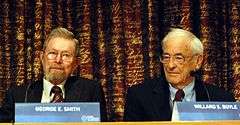
In December 1960, Ali Javan and his associates William Bennett and Donald Heriot successfully operated the first gas laser, the first continuous-light laser, operating at an unprecedented accuracy and color purity. In 1962, the electret microphone was invented by Gerhard M. Sessler and James Edward Maceo West. Also in 1962, John R. Pierce's vision of communications satellites was realized by the launch of Telstar. In 1964, the Carbon dioxide laser was invented by Kumar Patel. The research of Philip W. Anderson into electronic structure of magnetic and disordered systems led to improved understanding of metals and insulators for which he was awarded the Nobel Prize for Physics in 1977.[35] In 1965, Penzias and Wilson discovered the cosmic microwave background, for which they were awarded the Nobel Prize in Physics in 1978.[36] Frank W. Sinden, Edward E. Zajac, Kenneth C. Knowlton, and A. Michael Noll made computer-animated movies during the early to mid-1960s. Ken C. Knowlton invented the computer animation language BEFLIX. The first digital computer art was created in 1962 by Noll. In 1966, Orthogonal frequency-division multiplexing (OFDM), a key technology in wireless services, was developed and patented by R. W. Chang. In 1968, Molecular beam epitaxy was developed by J.R. Arthur and A.Y. Cho; molecular beam epitaxy allows semiconductor chips and laser matrices to be manufactured one atomic layer at a time. In 1969, Dennis Ritchie and Ken Thompson created the computer operating system UNIX for the support of telecommunication switching systems as well as general purpose computing. From 1969 to 1971, Aaron Marcus, the first graphic designer involved with computer graphics, researched, designed, and programmed a prototype interactive page-layout system for the Picturephone. In 1969, the charge-coupled device (CCD) was invented by Willard Boyle and George E. Smith, for which they were awarded the Nobel Prize in Physics in 2009. In the 1960s, the New York City site was sold and became the Westbeth Artists Community complex.
1970s

The 1970s and 1980s saw more and more computer-related inventions at the Bell Laboratories as part of the personal computing revolution. In 1972, Dennis Ritchie developed the compiled programming language C as a replacement for the interpreted language B which was then used in a worse is better rewrite of UNIX. Also, the language AWK was designed and implemented by Alfred Aho, Peter Weinberger, and Brian Kernighan of Bell Laboratories. In 1972, Marc Rochkind invented the Source Code Control System.
In 1970, A. Michael Noll invented a tactile, force-feedback system, coupled with interactive stereoscopic computer display. In 1971, an improved task priority system for computerized telephone exchange switching systems for telephone traffic was invented by Erna Schneider Hoover, who received one of the first software patents for it. In 1976, Optical fiber systems were first tested in Georgia and in 1980, the first single-chip 32-bit microprocessor, the Bellmac 32A was demonstrated. It went into production in 1982.
The 1970s also saw a major central office technology evolve from crossbar electromechanical relay-based technology and discrete transistor logic to Bell Labs-developed thick film hybrid and transistor–transistor logic (TTL), stored program-controlled switching systems; 1A/#4 TOLL Electronic Switching Systems (ESS) and 2A Local Central Offices produced at the Bell Labs Naperville and Western Electric Lisle, Illinois facilities. This technology evolution dramatically reduced floor space needs. The new ESS also came with its own diagnostic software that needed only a switchman and several frame technicians to maintain. The technology was often touted in the Bell Labs Technical Journals and Western Electric magazine (WE People).
1980s

In 1980, the TDMA and CDMA digital cellular telephone technology was patented. In 1982, Fractional quantum Hall effect was discovered by Horst Störmer and former Bell Laboratories researchers Robert B. Laughlin and Daniel C. Tsui; they consequently won a Nobel Prize in 1998 for the discovery. In 1985,[37] the programming language C++ had its first commercial release.[38] Bjarne Stroustrup started developing C++ at Bell Laboratories in 1979 as an extension to the original C language.[38]
In 1984, the first photoconductive antennas for picosecond electromagnetic radiation were demonstrated by Auston and others. This type of antenna became an important component in terahertz time-domain spectroscopy. In 1984, Karmarkar's algorithm for linear programming was developed by mathematician Narendra Karmarkar. Also in 1984, a divestiture agreement signed in 1982 with the American Federal government forced the break-up of AT&T: Bellcore (now Telcordia Technologies) was split off from Bell Laboratories to provide the same R&D functions for the newly created local exchange carriers. AT&T also was limited to using the Bell trademark only in association with Bell Laboratories. Bell Telephone Laboratories, Inc. became a wholly owned company of the new AT&T Technologies unit, the former Western Electric. The 5ESS Switch was developed during this transition. In 1985, laser cooling was used to slow and manipulate atoms by Steven Chu and team. In 1985, the modeling language A Mathematical Programming Language AMPL was developed by Robert Fourer, David M. Gay and Brian Kernighan at Bell Laboratories. Also in 1985, Bell Laboratories was awarded the National Medal of Technology "For contribution over decades to modern communication systems". During the 1980s, the operating system Plan 9 from Bell Labs was developed extending the UNIX model. Also, the Radiodrum, an electronic music instrument played in three space dimensions was invented. In 1988, TAT-8 became the first transatlantic fiber-optic cable. Bell Labs in Freehold, NJ developed the 1.3-micron fiber, cable, splicing, laser detector, and 280 Mbit/s repeater for 40,000 telephone-call capacity.
Arthur Ashkin invented optical tweezers that grab particles, atoms, viruses and other living cells with their laser beam fingers. A major breakthrough came in 1987, when Ashkin used the tweezers to capture living bacteria without harming them. He immediately began studying biological systems and optical tweezers are now widely used to investigate the machinery of life.[39]
1990s

In the early 1990s, approaches to increase modem speeds to 56K were explored at Bell Labs, and early patents were filed in 1992 by Ender Ayanoglu, Nuri R. Dagdeviren and their colleagues.[40] In 1994, the quantum cascade laser was invented by Federico Capasso, Alfred Cho, Jerome Faist and their collaborators. Also in 1994, Peter Shor devised his quantum factorization algorithm. In 1996, SCALPEL electron lithography, which prints features atoms wide on microchips, was invented by Lloyd Harriott and his team. The operating system Inferno, an update of Plan 9, was created by Dennis Ritchie with others, using the then-new concurrent programming language Limbo. A high performance database engine (Dali) was developed which became DataBlitz in its product form.[41]
In 1996, AT&T spun off Bell Laboratories, along with most of its equipment manufacturing business, into a new company named Lucent Technologies. AT&T retained a small number of researchers who made up the staff of the newly created AT&T Labs.
In 1997, the smallest then-practical transistor (60 nanometers, 182 atoms wide) was built. In 1998, the first optical router was invented.
2000s
2000 was an active year for the Laboratories, in which DNA machine prototypes were developed; progressive geometry compression algorithm made widespread 3-D communication practical; the first electrically powered organic laser invented; a large-scale map of cosmic dark matter was compiled, and the F-15 (material), an organic material that makes plastic transistors possible, was invented.
In 2002, physicist Jan Hendrik Schön was fired after his work was found to contain fraudulent data. It was the first known case of fraud at Bell Labs.
In 2003, the New Jersey Institute of Technology Biomedical Engineering Laboratory was created at Murray Hill, New Jersey.[42]
In 2005, Jeong H. Kim, former President of Lucent's Optical Network Group, returned from academia to become the President of Bell Laboratories.
In April 2006, Bell Laboratories' parent company, Lucent Technologies, signed a merger agreement with Alcatel. On 1 December 2006, the merged company, Alcatel-Lucent, began operations. This deal raised concerns in the United States, where Bell Laboratories works on defense contracts. A separate company, LGS Innovations, with an American board was set up to manage Bell Laboratories' and Lucent's sensitive U.S. government contracts. In March 2019, LGS Innovations was purchased by CACI.[43]
In December 2007, it was announced that the former Lucent Bell Laboratories and the former Alcatel Research and Innovation would be merged into one organization under the name of Bell Laboratories. This is the first period of growth following many years during which Bell Laboratories progressively lost manpower due to layoffs and spin-offs making the company shut down for a short period of time.
As of July 2008, however, only four scientists remained in physics research, according to a report by the scientific journal Nature.[44]
On 28 August 2008, Alcatel-Lucent announced it was pulling out of basic science, material physics, and semiconductor research, and it will instead focus on more immediately marketable areas, including networking, high-speed electronics, wireless networks, nanotechnology and software.[45]
In 2009, Willard Boyle and George Smith were awarded the Nobel Prize in Physics for the invention and development of the charge-coupled device (CCD).[46]
2010s

Gee Rittenhouse, former Head of Research, returned from his position as Chief Operating Officer of Alcatel-Lucent's Software, Services, and Solutions business in February 2013, to become the 12th President of Bell Labs.[47]
On 4 November 2013, Alcatel-Lucent announced the appointment of Marcus Weldon as President of Bell Labs. His stated charter was to return Bell Labs to the forefront of innovation in Information and communications technology by focusing on solving the key industry challenges, as was the case in the great Bell Labs innovation eras in the past.[48]
In July 2014, Bell Labs announced it had broken "the broadband Internet speed record" with a new technology dubbed XG-FAST that promises 10 gigabits per second transmission speeds.[49]
In 2014, Eric Betzig shared the Nobel Prize in Chemistry for his work in super-resolved fluorescence microscopy which he began pursuing while at Bell Labs in the Semiconductor Physics Research Department.[50]
On 15 April 2015, Nokia agreed to acquire Alcatel-Lucent, Bell Labs' parent company, in a share exchange worth $16.6 billion.[51][52] Their first day of combined operations was 14 January 2016.[53]
In September 2016, Nokia Bell Labs, along with Technische Universität Berlin Deutsche Telekom T-Labs and the Technical University of Munich achieved a data rate of one terabit per second by improving transmission capacity and spectral efficiency in an optical communications field trial with a new modulation technique.[54]
In 2018, Arthur Ashkin shared the Nobel Prize in Physics for his work on "the optical tweezers and their application to biological systems"[39] which was developed at Bell Labs in 1980s.
| Period | Name of President | Lifetime | |
|---|---|---|---|
| 13 | 2013– | Marcus Weldon | b. 1968 |
| 12 | 2013–2013 | Gee Rittenhouse | |
| 11 | 2005–2013 | Jeong Hun Kim | b. 1961 |
| 10 | 2001–2005 | Bill O'Shea | b. 1957 |
| 9 | 1999–2001 | Arun Netravali | b. 1946 |
| 8 | 1995–1999 | Dan Stanzione | b. 1945 |
| 7 | 1991–1995 | John Sullivan Mayo | b. 1930 |
| 6 | 1979–1991 | Ian Munro Ross | 1927–2013 |
| 5 | 1973–1979 | William Oliver Baker | 1915–2005 |
| 4 | 1959–1973 | James Brown Fisk | 1910–1981[55] |
| 3 | 1951–1959 | Mervin Kelly | 1895–1971 |
| 2 | 1940–1951 | Oliver Buckley | 1887–1959 |
| 1 | 1925–1940 | Frank Baldwin Jewett | 1879–1949 |
Nobel Prizes and Turing Awards
Nine Nobel Prizes have been awarded for work completed at Bell Laboratories.[56]
- 1937: Clinton J. Davisson shared the Nobel Prize in Physics for demonstrating the wave nature of matter.
- 1956: John Bardeen, Walter H. Brattain, and William Shockley received the Nobel Prize in Physics for inventing the first transistors.
- 1977: Philip W. Anderson shared the Nobel Prize in Physics for developing an improved understanding of the electronic structure of glass and magnetic materials.
- 1978: Arno A. Penzias and Robert W. Wilson shared the Nobel Prize in Physics. Penzias and Wilson were cited for their discovering cosmic microwave background radiation, a nearly uniform glow that fills the Universe in the microwave band of the radio spectrum.
- 1997: Steven Chu shared the Nobel Prize in Physics for developing methods to cool and trap atoms with laser light.
- 1998: Horst Störmer, Robert Laughlin, and Daniel Tsui, were awarded the Nobel Prize in Physics for discovering and explaining the fractional quantum Hall effect.
- 2009: Willard S. Boyle, George E. Smith shared the Nobel Prize in Physics with Charles K. Kao. Boyle and Smith were cited for inventing charge-coupled device (CCD) semiconductor imaging sensors.
- 2014: Eric Betzig shared the Nobel Prize in Chemistry for his work in super-resolved fluorescence microscopy which he began pursuing while at Bell Labs.
- 2018: Arthur Ashkin shared the Nobel Prize in Physics for his work on "the optical tweezers and their application to biological systems"[39] which was developed at Bell Labs.
The Turing Award has been won four times by Bell Labs researchers.
- 1968: Richard Hamming for his work on numerical methods, automatic coding systems, and error-detecting and error-correcting codes.[57][58]
- 1983: Ken Thompson[59] and Dennis Ritchie[60] for their work on operating system theory, and for developing Unix.[57]
- 1986: Robert Tarjan[61] with John Hopcroft,[62] for fundamental achievements in the design and analysis of algorithms and data structures.
- 2018: Yann LeCun and Yoshua Bengio shared the Turing Award with Geoffrey Hinton for their work in Deep Learning.
Notable alumni
| Alumni | Notes | |
|---|---|---|
 | Ali Javan | Invented the gas laser in 1960. |
| Arno Allan Penzias | Discovered background radiation, with Robert W. Wilson, originating from the Big Bang and won the Nobel Prize in 1978 for the discovery. | |
| Arthur Ashkin | Has been considered as the father of the topical field of optical tweezers, for which he was awarded the Nobel Prize in Physics 2018. | |
| Arthur Hebard | Noted for leading the discovery of superconductivity in Buckminsterfullerene in 1991. | |
| Bishnu Atal | Developed new speech processing and encoding algorithms, including fundamental work on linear prediction of speech and linear predictive coding (LPC), and the development of code-excited linear prediction (CELP) speech encoding, the basis for all speech communication codecs in mobile and Internet voice communications. | |
| Bjarne Stroustrup | Was the head of Bell Labs Large-scale Programming Research department, from its creation until late 2002 and created the C++ programming language. | |
 | Brian Kernighan | Helped create Unix, AWK, AMPL, and The C Programming Language (book) |
| Claire F. Gmachl | Developed novel designs for solid-state lasers leading to advances in the development of quantum cascade lasers. | |
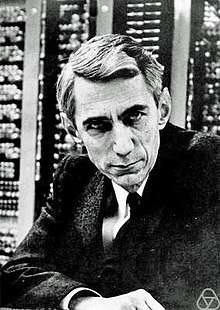 | Claude Shannon | Founded information theory with the publishing of A Mathematical Theory of Communication in 1948. He is perhaps equally well known for founding both digital computer and digital circuit design theory in 1937, when, as a 21-year-old master's degree student at the Massachusetts Institute of Technology (MIT), he wrote his thesis demonstrating that electrical applications of Boolean algebra could construct any logical, numerical relationship.[63] Shannon contributed to the field of cryptanalysis for national defense during World War II, including his basic work on codebreaking and secure telecommunications. For two months early in 1943, Shannon came into contact with the leading British cryptanalyst and mathematician Alan Turing. Shannon and Turing met at teatime in the cafeteria.[64] Turing showed Shannon his 1936 paper that defined what is now known as the "Universal Turing machine";[65][66] this impressed Shannon, as many of its ideas complemented his own. |
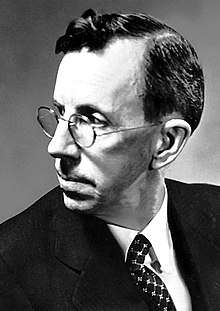 | Clinton Davisson | Davisson and Lester Germer performed an experiment showing that electrons were diffracted at the surface of a crystal of nickel. This celebrated Davisson-Germer experiment confirmed the de Broglie hypothesis that particles of matter have a wave-like nature, which is a central tenet of quantum mechanics. Their observation of diffraction allowed the first measurement of a wavelength for electrons. He shared the Nobel Prize in 1937 with George Paget Thomson, who independently discovered electron diffraction at about the same time as Davisson. |
| Corinna Cortes | Head of Google Research, New York. | |
 | Daniel Tsui | Along with Robert Laughlin and Horst Störmer discovered new form of quantum fluid. |
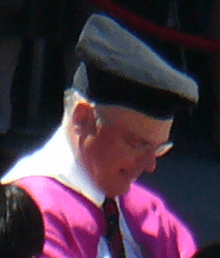 | David A. B. Miller | |
 | Dawon Kahng | Invented the MOSFET (metal-oxide-semiconductor field-effect transistor) with Mohamed M. Atalla in 1959.[34][67] It revolutionized the electronics industry,[68][69] and is the most widely used semiconductor device in the world.[70][71] |
 | Dennis Ritchie | Created the C programming language and, with long-time colleague Ken Thompson, the Unix operating system. |
| Donald Cox | Received the IEEE Alexander Graham Bell Medal (1993) | |
| Elizabeth Bailey | Worked in technical programming at Bell Laboratories from 1960 to 1972, before transferring to the economic research section from 1972 to 1977. | |
| Eric Betzig | An American physicist who worked to develop the field of fluorescence microscopy and photoactivated localization microscopy. He was awarded the 2014 Nobel Prize in Chemistry for "the development of super-resolved fluorescence microscopy" along with Stefan Hell and fellow Cornell alumnus William E. Moerner. | |
 | Eric Schmidt | Did a complete re-write with Mike Lesk of Lex, a program to generate lexical analysers for the Unix computer operating system. |
| Erna Schneider Hoover | Invented the computerized telephone switching method. | |
| Esther M. Conwell | Studied effects of high electric fields on electron transport in semiconductors, member of the National Academy of Engineering, National Academy of Sciences, and the American Academy of Arts and Sciences. | |
| Evelyn Hu | Pioneer in the fabrication of nanoscale electronic and photonic devices. | |
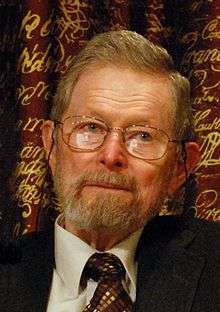 | George E. Smith | Led research into novel lasers and semiconductor devices. During his tenure, Smith was awarded dozens of patents and eventually headed the VLSI device department. George E. Smith shared the 2009 Nobel Prize in Physics with Willard Boyle for "the invention of an imaging semiconductor circuit—the CCD sensor, which has become an electronic eye in almost all areas of photography".[72] |
| Gil Amelio | Amelio was on the team that demonstrated the first working charge-coupled device (CCD). Worked at Fairchild Semiconductor, and the semiconductor division of Rockwell International but is best remembered as a CEO of National Semiconductor and Apple Inc. | |
| Harvey Fletcher | "father of stereophonic sound". As Director of Research at Bell Labs, he oversaw research in electrical sound recording, including more than 100 stereo recordings with conductor Leopold Stokowski in 1931–1932.[73][74] | |
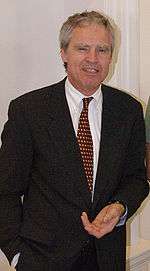 | Horst Ludwig Störmer | Along with Robert Laughlin and Daniel Tsui discovered new form of quantum fluid. |
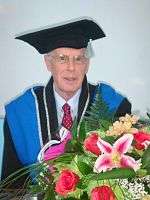 | John Hopcroft | Received the Turing Award jointly with Robert Tarjan in 1986 for fundamental achievements in the design and analysis of algorithms and data structures. |
.jpg) | Ingrid Daubechies | Developed the orthogonal Daubechies wavelet and the biorthogonal Cohen–Daubechies–Feauveau wavelet. She is best known for her work with wavelets in image compression (such as JPEG 2000) and digital cinema. |
| Jessie MacWilliams | Developed the MacWilliams identities in coding theory. | |
| Dr. John E. Abate | AT&T Fellow (1996) and Bell Telephone Labs Fellow (1990), awarded for: "Substantial and fundamental contributions, nationally and internationally, in the area of digital synchronization planning for public and private networks." He was a Distinguished MTS and Manager at AT&T's BTL during its golden age of innovation. His scientific contributions are cited in numerous articles on communications and astronautics systems. He was responsible for AT&T's network synchronization, digital network design and architecture, network planning and modeling of customer private networks, synchronization industry interface standards, and analysis of video and speech networks. In 1983, he founded the ANSI Standards Working Group responsible for developing synchronization standards for digital telecommunication networks within the United States. From 1983 to 1986, he served as its Chairman. From 1986 to 1989, he served as a member of the Panel for Basic Standards, Board on Assessment of the U.S. National Institute of Standards and Technology (formerly the National Bureau of Standards). He was cited in Who's Who in America, and in Who's Who in Science and Engineering. In 1992, he was awarded the NJIT Alumni Honor Roll Award.[75] | |
| John Mashey | Worked on the PWB/UNIX operating system at Bell Labs from 1973 to 1983, authoring the PWB shell, also known as the "Mashey Shell".[76] | |
| John M. Chambers | Developed the statistical programming language S which is the forerunner to R. | |
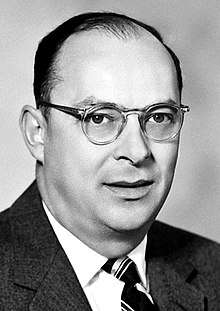 | John Bardeen | With William Shockley and Walter Brattain, the three scientists invented the point-contact transistor in 1947 and were jointly awarded the 1956 Nobel Prize in Physics. |
| Jon Hall | Executive Director of Linux International,[77] | |
| Ken Thompson | Designed and implemented the original Unix operating system. He also invented the B programming language, the direct predecessor to the C programming language, and was one of the creators and early developers of the Plan 9 operating systems. With Joseph Henry Condon he designed and built Belle, the first chess machine to earn a master rating. Since 2006, Thompson has worked at Google, where he co-invented the Go programming language. | |
| Laurie Spiegel | Electronic musician and engineer known for developing the algorithmic composition software Music Mouse. | |
| Margaret H. Wright | Pioneer in numerical computing and mathematical optimization, head of the Scientific Computing Research Department and Bell Labs Fellow, president of the Society for Industrial and Applied Mathematics. | |
| Max Mathews | Wrote MUSIC, the first widely used program for sound generation, in 1957. | |
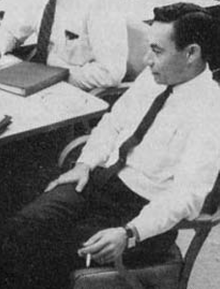 | Mohamed M. Atalla | Developed the silicon surface passivation process in 1957,[67][78] and then invented the MOSFET (metal-oxide-semiconductor field-effect transistor), the first practical implementation of a field-effect transistor, with Dawon Kahng in 1959.[68][69][70][71] This led to a breakthrough in semiconductor technology,[79][80] and revolutionized the electronics industry.[68][69] |
| Narendra Karmarkar | Developed Karmarkar's algorithm. | |
| Osamu Fujimura | Japanese physicist, phonetician and linguist, recognized as one of the pioneers of speech science. Invented the C/D model of speech articulation. | |
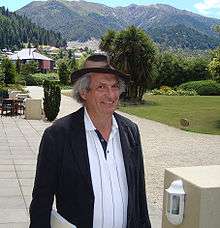 | Persi Diaconis | Known for tackling mathematical problems involving randomness and randomization, such as coin flipping and shuffling playing cards. |
 | Philip Warren Anderson | In 1977 Anderson was awarded the Nobel Prize in Physics for his investigations into the electronic structure of magnetic and disordered systems, which allowed for the development of electronic switching and memory devices in computers. |
| Phyllis Fox | Co-wrote the DYNAMO simulation programming language, principal author of the first LISP manual, and developed the PORT Mathematical Subroutine Library. | |
| Richard Hamming | Created a family of mathematical error-correcting code, which are called Hamming codes. Programmed one of the earliest computers, the IBM 650, and with Ruth A. Weiss developed the L2 programming language, one of the earliest computer languages, in 1956. | |
 | Robert Laughlin | Along with Horst Störmer and Daniel Tsui discovered new form of quantum fluid. |
| Rob Pike | A member of the Unix team and was involved in the creation of the Plan 9 and Inferno operating systems, as well as the Limbo programming language. Co-authored the books The Unix Programming Environment and The Practice of Programming with Brian Kernighan. Co-created the UTF-8 character encoding standard with Ken Thompson, the Blit graphical terminal with Bart Locanthi Jr. and the sam and acme text editors. Pike has worked at Google, where he co-created the Go and Sawzall programming languages. | |
 | Robert Tarjan | Received the Turing Award jointly with John Hopcroft in 1986 for fundamental achievements in the design and analysis of algorithms and data structures. |
| Robert W. Wilson | Discovered background radiation, with Arno Allan Penzias, originating from the Big Bang and won the Nobel Prize in 1978 for that. | |
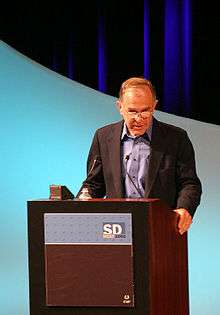 | Steve Bourne | Created the Bourne shell, the adb debugger and authored the book The Unix System. He also served as president of the Association for Computing Machinery (ACM) (2000-2002), was made a fellow of the ACM (2005), received the ACM Presidential Award (2008) and the Outstanding Contribution to ACM Award (2017). |
 | Steven Chu | Known for his research at Bell Labs and Stanford University in cooling and trapping of atoms with laser light, which won him the Nobel Prize in Physics in 1997, along with his scientific colleagues Claude Cohen-Tannoudji and William Daniel Phillips.[81] |
| Steven Cundiff | Was instrumental in the development of the first frequency comb that led to one half of the 2005 Nobel prize.[82] Also made significant contributions to the ultrafast dynamics of semiconductor nanostructures, including the 2014 discovery of the dropleton quasi-particle.[83] | |
| Stuart Feldman | Creator of the computer software program make for UNIX systems. He was also an author of the first Fortran 77 compiler, and he was part of the original group at Bell Labs that created the Unix operating system.[84] | |
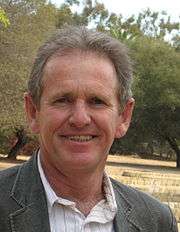 | Trevor Hastie | Known for his contributions to applied statistics, especially in the field of machine learning, data mining, and bioinformatics. |
| Zhenan Bao | Development of the first all plastic transistor, or organic field-effect transistors which allows for its use in electronic paper.[85] | |
 | Walter Houser Brattain | With fellow scientists John Bardeen and William Shockley, invented the point-contact transistor in December, 1947.[86] They shared the 1956 Nobel Prize in Physics for their invention. |
 | Willard Boyle | Shares the 2009 Nobel Prize in Physics with George E. Smith for "the invention of an imaging semiconductor circuit—the CCD sensor, which has become an electronic eye in almost all areas of photography." |
| William B. Snow | Made major contributions to acoustics from 1923–1940. Fellow of the Audio Engineering Society (AES), received its Gold Medal Award in 1968. | |
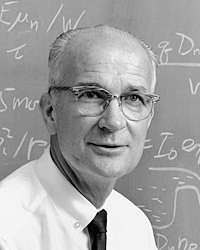 | William Shockley | With John Bardeen and Walter Brattain, the three scientists invented the point-contact transistor in 1947 and were jointly awarded the 1956 Nobel Prize in Physics. |
| Yann LeCun | Recognized as a founding father of convolutional neural networks and for work on optical character recognition and computer vision. He received the Turing Award in 2018 with Geoffrey Hinton and Yoshua Bengio for their work in deep learning. | |
| Yoshua Bengio | Received the Turing Award in 2018 with Geoffrey Hinton and Yann LeCun for their work in deep learning. | |
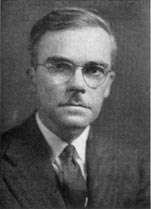 | Edward Lawry Norton | Famous for the Norton's theorem. |
| Maurice Karnaugh | Famous for the Karnaugh map. | |
| Warren P. Mason | Founder of distributed-element circuits, inventor of the GT quartz crystal, and many discoveries and inventions in ultrasonics and acoustics. | |
| Sharon Haynie | Developed DuPont's bio-3G product line and adhesives to close wounds. |
Programs
On May 20, 2014, Bell Labs announced the Bell Labs Prize, a competition for innovators to offer proposals in information and communication technologies, with cash awards of up to $100,000 for the grand prize.[89]
Bell Labs Technology Showcase
The Murray Hill campus features a 3,000-square-foot (280 m2) exhibit, the Bell Labs Technology Showcase, showcasing the technological discoveries and developments at Bell Labs. The exhibit is located just off the main lobby and is open to the public.[90]
See also
- Bell Labs Holmdel Complex
- Bell Labs Technical Journal—Published scientific journal of Bell Laboratories (1996–present)
- Bell System Technical Journal—Published scientific journal of Bell Laboratories (1922–1983)
- Bell Labs Record
- Industrial laboratory
- George Stibitz—Bell Laboratories engineer—"father of the modern digital computer"
- History of mobile phones—Bell Laboratories conception and development of cellular phones
- High speed photography & Wollensak—Fastax high speed (rotating prism) cameras developed by Bell Labs
- Knolls Atomic Power Laboratory
- Simplified Message Desk Interface
- Sound film—Westrex sound system for cinema films developed by Bell Labs
- TWX Magazine—A short-lived trade periodical published by Bell Laboratories (1944–1952)
- Walter A. Shewhart—Bell Laboratories engineer—"father of statistical quality control"
- "Worse is Better"—A software design philosophy also called "The New Jersey Style" under which UNIX and C were supposedly developed
- Experiments in Art and Technology—A collaboration between artists and Bell Labs engineers & scientists to create new forms of art.
References
- "Bell Labs Innovations". American Institute of Physics. Retrieved 9 June 2019.
- "AT & T Bell Laboratories". American Institute of Physics. Retrieved 9 June 2019.
- "Bell Telephone Laboratories". American Institute of Physics. Retrieved 9 June 2019.
- "2018 Nobel Prize in Physics laureate Arthur Ashkin delivers his Nobel Lecture at Nokia Bell Labs". Nokia. Retrieved 2020-04-09.
- Federal Reserve Bank of Minneapolis. "Consumer Price Index (estimate) 1800–". Retrieved January 1, 2020.
- Bruce, Robert V. Bell: Alexander Bell and the Conquest of Solitude. Ithaca, New York: Cornell University Press, 1990. ISBN 0-8014-9691-8.
- "Volta Bureau". National Historic Landmark summary listing. National Park Service. Archived from the original on 2012-10-11. Retrieved 2008-05-10.
- Unsigned (n.d.), National Register of Historic Places Inventory-Nomination: Volta Bureau, National Park Service and Accompanying three photos, exterior, from 1972 (920 KB)
- "Volta Laboratory & Bureau". Washington D.C. National Register of Historic Places Travel Itinerary listing. National Park Service. Archived from the original on 12 May 2008. Retrieved 2008-05-10.
- Mackay, James (1997). Alexander Graham Bell, A Life. USA: John Wiley & Sons Inc.
- Garnet, Robert (1985). The Telephone Enterprise. Baltimore, Maryland: The Johns Hopkins University Press. pp. 1–44.
- "Nokia Bell Labs History". Nokia Bell Labs. 20 July 2018.
- Donofrio, Angelo (May–June 1966). "West Street Story". Bell Labs Reporter. 15.
- Gertner, Jon (2012). The Idea Factory. New York: The Penguin Press.
- Adams, Butler (1999). Manufacturing the Future. Cambridge: Cambridge University Press.
- "It's official! Bayer buys Alcatel-Lucent site in Hanover Twp". The Hanover Eagle. Retrieved 21 May 2012.
- "Future takes shape for Bell Labs site". The New York Times. Retrieved September 29, 2013.
- "iCIMS Plans Move to Landmark Bell Works Building, Commits to Continued Growth in NJ". ICIMS.com. July 10, 2016. Retrieved October 10, 2018.
- "Hundreds of new workers to move into historic Bell Labs building". NJ.com. April 10, 2017. Retrieved October 10, 2018.
- "Bell Laboratories". Encyclopædia Britannica. Archived from the original on 2006-05-03.
- Leopold Stokowski, Harvey Fletcher, and the Bell Laboratories Experimental Recordings, Stokowski.org. Retrieved 2020-03-03.
- Copeland, Jack; Bowen, Jonathan (2017). "Chapter 1: Life and work & Chapter 18: Delilah—encrypting speech". The Turing Guide. Oxford University Press. ISBN 978-0198747833.
- Irvine, M. M. (July 2001). pdf. "Early digital computers at Bell Telephone Laboratories". IEEE Annals of the History of Computing. 23 (3): 22–42. doi:10.1109/85.948904. ISSN 1058-6180.
- Kaisler, Stephen H. (2016). "Chapter Three: Stibitz's Relay Computers". Birthing the Computer: From Relays to Vacuum Tubes. Cambridge Scholars Publishing. pp. 32–37. ISBN 9781443896313.
- Cesareo, O. (Dec 1946). "THE RELAY INTERPOLATOR". Bell Laboratories Record. XXIV (12): 457–460.
- Akera, Atsushi (2008). Calculating a Natural World: Scientists, Engineers, and Computers During the Rise of U.S. Cold War Research. MIT Press. p. 57. ISBN 9780262512039.
- Belzer, Jack; Holzman, Albert G.; Kent, Allen (1976). Encyclopedia of Computer Science and Technology: Volume 3 – Ballistics Calculations to Box–Jenkins Approach to Time Series Analysis and Forecasting. CRC Press. p. 197. ISBN 9780824722531.
- By Glen G. Jr. Langdon (2012-12-02). Logic Design: A Review Of Theory And Practice. p. 2. ISBN 9780323160452.
- Juley, Joseph (Jan 1947). "THE BALLISTIC COMPUTER". Bell Laboratories Record. XXV (1): 5–9.
- Research, United States Office of Naval (1953). A survey of automatic digital computers. Model V-VI, IV. Office of Naval Research, Dept. of the Navy. pp. 9–10, 63 (in reader: 15–16, 69).
- "Г. – Bell Labs – Model V" [G. – Bell Labs – Model V]. oplib.ru (in Russian). Google translation. Retrieved 2017-10-11.CS1 maint: others (link)
- Reilly, Edwin D.; Ralston, Anthony; Hemmendinger, David (2000). Encyclopedia of Computer Science. Nature Publishing Group. p. 548. ISBN 9781561592487.
-
- Alt, Franz L. (1948). "A Bell Telephone Laboratories' computing machine. I". Mathematics of Computation. 3 (21): 1–13. doi:10.1090/S0025-5718-1948-0023118-1. ISSN 0025-5718.
- Alt, Franz L. (1948). "A Bell Telephone Laboratories' computing machine. II". Mathematics of Computation. 3 (22): 69–84. doi:10.1090/S0025-5718-1948-0025271-2. ISSN 0025-5718.
- "1960 - Metal Oxide Semiconductor (MOS) Transistor Demonstrated". The Silicon Engine. Computer History Museum.
- Banks, Michael, "Condensed-matter physics pioneer Philip Anderson dies aged 96, Physics World, March 30, 2020
- http://nobelprize.org/nobel_prizes/physics/laureates/1978/
- "The Rise of C++ - Bell Labs". www.bell-labs.com. Archived from the original on 2017-06-30. Retrieved 2016-05-13.
- JANA, DEBASISH (2014-10-01). C++ AND OBJECT-ORIENTED PROGRAMMING PARADIGM. PHI Learning Pvt. Ltd. ISBN 9788120350335.
- "The Nobel Prize in Physics 2018". NobelPrize.org. Retrieved 2018-10-02.
- US expired 5394437, Ender Ayanoglu; Nuri R. Dagdeviren & James E. Mazo et al., "High-speed modem synchronized to a remote CODEC", published 1995-02-28, assigned to AT&T Corp
- "The Dali Home Page". Archived from the original on 1997-01-16.
- New Jersey Nanotechnology Consortium. Profile Archived May 30, 2008, at the Wayback Machine
- Cooper, Laura (January 31, 2019). "CACI International to Buy Private-Equity Backed LGS Innovations for $750 Million" – via www.wsj.com.
- Geoff Brumfiel (2008). "Access : Bell Labs bottoms out : Nature News". Nature. 454 (7207): 927. doi:10.1038/454927a. PMID 18719552.
- Ganapati, Priya (2008-08-27). "Bell Labs Kills Fundamental Physics Research". Wired. Archived from the original on 28 August 2008. Retrieved 2008-08-28.
- "The 2009 Nobel Prize in Physics – Press Release". Nobelprize.org. 2009-10-06. Retrieved 2017-01-07.
- "Gee Rittenhouse to take over as President of world-famous research institution Bell Labs" (Press release). Paris: Alcatel-Lucent. February 18, 2013. Retrieved 2016-03-10.
- "Marcus Weldon appointed President of Alcatel-Lucent's Bell Labs to accelerate and unlock innovation as part of The Shift Plan" (Press release). Paris: Alcatel-Lucent. November 4, 2013. Retrieved 2016-03-10.
- "Alcatel-Lucent sets new world record broadband speed of 10 Gbps for transmission of data over traditional copper telephone lines" (Press release). Paris: Alcatel-Lucent. July 9, 2014. Archived from the original on 2016-03-10. Retrieved 2016-03-10.
- "The Nobel Prize in Chemistry 2014". Nobel Media AB. 2014. Retrieved 2016-03-10.
- "Nokia and Alcatel-Lucent Combine to Create an Innovation Leader in Next Generation Technology and Services for an IP Connected World" (Press release). Helsinki & Paris: Nokia. April 15, 2015. Archived from the original on 2015-04-16. Retrieved 2016-03-10.
- Scott, Mark; Jolly, David (April 15, 2015). "Nokia Agrees to $16.6 Billion Takeover of Alcatel-Lucent". The New York Times. Retrieved 2016-03-10.
- "Nokia celebrates first day of combined operations with Alcatel-Lucent" (Press release). Espoo, Finland: Nokia. January 14, 2016. Archived from the original on 2016-03-09. Retrieved 2016-03-10.
- "Optical fiber transmits one terabit per second" (Press release). Technical University of Munich. 2016-09-16. Retrieved 2016-09-23.
- Barnaby J. Feder (August 13, 1981). "James Fisk, Bell Labs Executive And Leader In Radar, Dies At 70". The New York Times.
- "Awards & Recognition - Bell Labs". Archived from the original on 2016-03-08. Retrieved 2016-03-08.
- O'Regan, Gerard (2015-09-24). Pillars of Computing: A Compendium of Select, Pivotal Technology Firms. Springer. ISBN 9783319214641.
- "Richard W. Hamming - A.M. Turing Award Laureate". amturing.acm.org. Retrieved 2019-02-03.
- "Kenneth Lane Thompson - A.M. Turing Award Laureate". amturing.acm.org. Retrieved 2019-02-03.
- "Dennis M. Ritchie - A.M. Turing Award Laureate". amturing.acm.org. Retrieved 2019-02-03.
- "Robert E Tarjan - A.M. Turing Award Laureate". amturing.acm.org. Retrieved 2019-02-03.
- "John E Hopcroft - A.M. Turing Award Laureate". amturing.acm.org. Retrieved 2019-02-03.
- Poundstone, William (2005). Fortune's Formula : The Untold Story of the Scientific Betting System That Beat the Casinos and Wall Street. Hill & Wang. ISBN 978-0-8090-4599-0.
- Hodges, Andrew (1992), Alan Turing: The Enigma, London: Vintage, pp. 243–252, ISBN 978-0-09-911641-7
- Turing, A.M. (1936), "On Computable Numbers, with an Application to the Entscheidungsproblem", Proceedings of the London Mathematical Society, 2 (published 1937), 42, pp. 230–65, doi:10.1112/plms/s2-42.1.230
- Turing, A.M. (1938), "On Computable Numbers, with an Application to the Entscheidungsproblem: A correction", Proceedings of the London Mathematical Society, 2 (published 1937), 43 (6), pp. 544–6, doi:10.1112/plms/s2-43.6.544
- Lojek, Bo (2007). History of Semiconductor Engineering. Springer Science & Business Media. pp. 120 & 321–3. ISBN 9783540342588.
- Chan, Yi-Jen (1992). Studies of InAIAs/InGaAs and GaInP/GaAs heterostructure FET's for high speed applications. University of Michigan. p. 1.
The Si MOSFET has revolutionized the electronics industry and as a result impacts our daily lives in almost every conceivable way.
- Grant, Duncan Andrew; Gowar, John (1989). Power MOSFETS: theory and applications. Wiley. p. 1. ISBN 9780471828679.
The metal-oxide-semiconductor field-effect transistor (MOSFET) is the most commonly used active device in the very large-scale integration of digital integrated circuits (VLSI). During the 1970s these components revolutionized electronic signal processing, control systems and computers.
- "Who Invented the Transistor?". Computer History Museum. 4 December 2013. Retrieved 20 July 2019.
- Golio, Mike; Golio, Janet (2018). RF and Microwave Passive and Active Technologies. CRC Press. p. 18-2. ISBN 9781420006728.
- Parry, Wayne (2009-10-06). "3 Americans share 2009 Nobel physics prize". 6abc.com. Retrieved 2017-01-07.
- Huffman, Larry. "Stokowski, Harvey Fletcher, and the Bell Labs Experimental Recordings". www.stokowski.org. Retrieved February 17, 2014.
- William Ander Smith, The mystery of Leopold Stokowski. Fairleigh Dickinson Univ Press, 1990, p.175.
- {url=https://www.obrienfuneralhome.com/memorials/Abate-Dr.+John/3561931/service-details.php}
- Dolotta, T.A.; Haight, R.C.; Mashey, J.R. (July–August 1978). "The Programmer's Workbench" (PDF). Bell System Technical Journal. 57 (6 Part 2): 2177–2200. doi:10.1002/j.1538-7305.1978.tb02148.x.
- "Linux International". Li.org. Archived from the original on 2015-08-04. Retrieved 2014-02-28.
- Bassett, Ross Knox (2007). To the Digital Age: Research Labs, Start-up Companies, and the Rise of MOS Technology. Johns Hopkins University Press. p. 46. ISBN 9780801886393.
- Huff, Howard (2005). High Dielectric Constant Materials: VLSI MOSFET Applications. Springer Science & Business Media. p. 34. ISBN 9783540210818.
- Sah, Chih-Tang (October 1988). "Evolution of the MOS transistor-from conception to VLSI" (PDF). Proceedings of the IEEE. 76 (10): 1280–1326 (1290). Bibcode:1988IEEEP..76.1280S. doi:10.1109/5.16328. ISSN 0018-9219.
Those of us active in silicon material and device research during 1956–1960 considered this successful effort by the Bell Labs group led by Atalla to stabilize the silicon surface the most important and significant technology advance, which blazed the trail that led to silicon integrated circuit technology developments in the second phase and volume production in the third phase.
- Tore Frängsmyr, ed. (1998). "Steven Chu Autobiography". The Nobel Prizes 1997. Les Prix Nobel. Stockholm: The Nobel Foundation. Retrieved 2007-06-25.
- "Carrier-Envelope Phase Control of Femtosecond Mode-Locked Lasers and Direct Optical Frequency Synthesis". 28 April 2000. doi:10.1126/science.288.5466.635.
- "Quantum droplets of electrons and holes". 27 February 2014. doi:10.1038/nature12994.
- McIlroy, M. D. (1987). A Research Unix reader: annotated excerpts from the Programmer's Manual, 1971–1986 (PDF) (Technical report). CSTR. Bell Labs. 139.
- Dagani, Ron (30 November 1998). "An Innovation Engine for Lucent". Chemical & Engineering News. 76 (48). pp. 24–28. doi:10.1021/cen-v076n048.p024.
- "Walter H. Brattain". IEEE Global History Network. IEEE. Retrieved 10 August 2011.
- "Which Laboratory Boasts The Most Nobel Prize Winners?". Howtogeek.com. Retrieved 2017-01-07.
- "Awards & Recognition - Bell Labs". Archived from the original on 2016-03-08. Retrieved 2016-03-08.
- "Nokia Bell Labs Prize". Bell Labs. Retrieved 2017-01-07.
- "Bell Labs Technology Showcase". Alchemystudio.com. Retrieved 2017-01-07.
Further reading
- Martin, Douglas. Ian M. Ross, a President at Bell Labs, Dies at 85, The New York Times, March 16, 2013, p. A23
- Jon Gertner (2013). The Idea Factory: Bell Labs and the Great Age of American Innovation. ISBN 978-0143122791.
- Gleick, James. The Information: A History, a Theory, a Flood. Vintage Books, 2012, 544 pages. ISBN 978-1400096237.
External links
- Official website
- Bell Works, the re-imagining of the historic former Bell Labs building in Holmdel, New Jersey
- Timeline of discoveries as of 2006 (https://www.bell-labs.com/timeline)
- Bell Labs' Murray Hill anechoic chamber
- Bell Laboratories and the Development of Electrical Recording
- The Idea Factory – a video interview with Jon Gertner, author of "The Idea Factory: Bell Labs and the Great Age of American Innovation, by Dave Iverson of KQED-FM Public Radio, San Francisco

%2C_June_13%2C_2011.jpg)